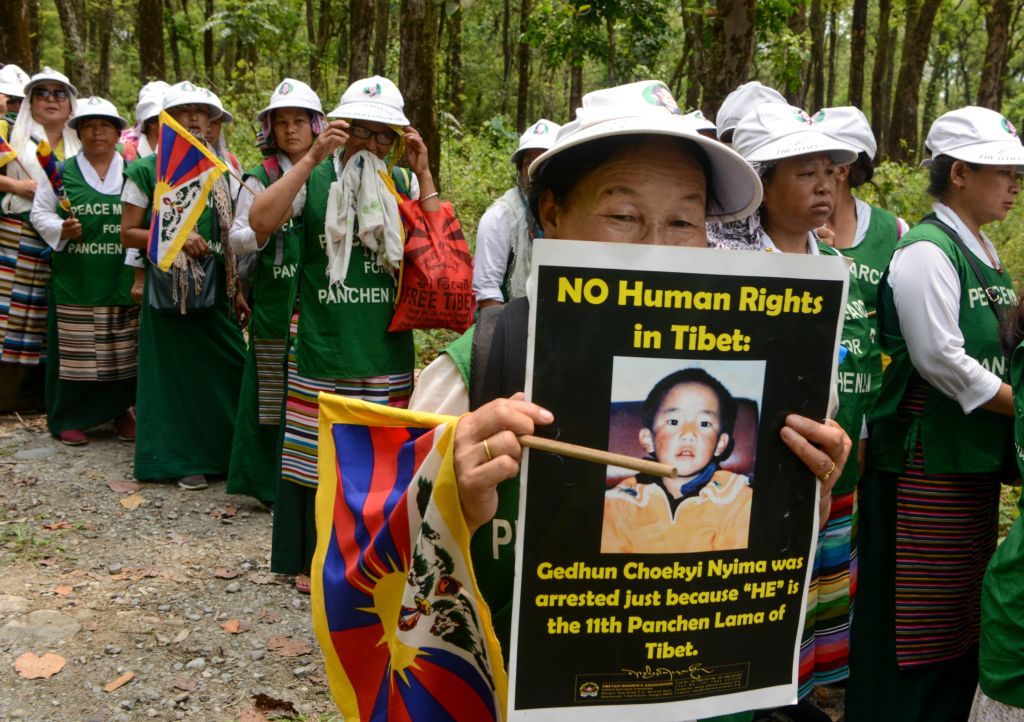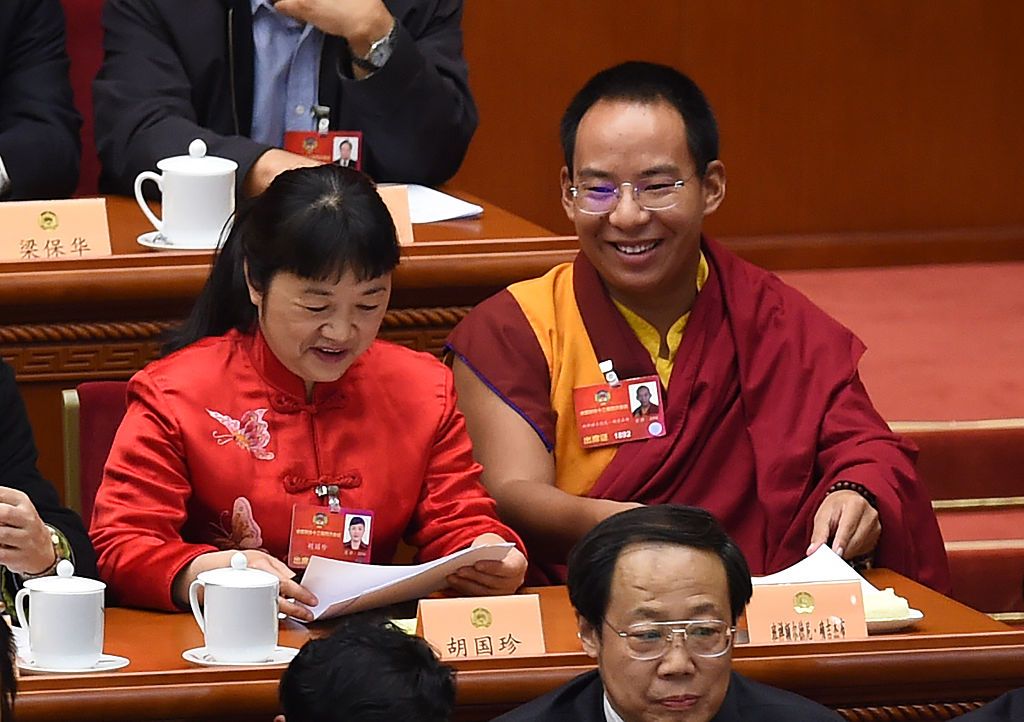NEW DELHI—As the Chinese Communist Party’s aggression and military build-up increases on the Indian border, experts warn about the deepening footprint of the CCP’s primary propaganda agency, The United Front Work Department (UFWD), against India’s policies in South Asia and at home.
Shikha Aggarwal, a Taipei based Sinologist and a 2020 fellow with the Ministry of Foreign Affairs Taiwan told The Epoch Times over the phone that the UFWD was described by Mao as the “magic weapon” and by Xi Jinping as the quintessential instrument to realize the “China dream.” It involves influencing narratives by subverting popular opinion, legislation, and policy decisions in conjunction with the CCP’s functional goals in a region.
Frank Lehberger, another Sinologist and a Senior Research Fellow with India-based Usanas Foundation told The Epoch Times in an email that since coming to power, Xi has gradually extended the influence and enhanced the power of the UFWD.
“The UFWD is part of this ‘unrestricted warfare’ (a Chinese term 超限战争) that includes information and psychological warfare which the CCP is waging not only against India’s foreign policies but also against India’s internal matters or policies. Everything with the goal of softening India’s resolve and ultimately making India subservient to China,” said Germany-based Lehberger.
The UFWD is some sort of CCP “soft power,” and its most widely-used “non-lethal weapon,” according to Lehberger.
“During the last five years, Xi has ordered that the entire bureaucracy and every CCP branch join in the activities of the UFWD. This wide array of activities is called ‘UF work’ which has also now being expanded in scope, resourcing, and coordination,” he said. All Chinese leaders during the past 100 years have understood that it was the UFWD and not the army that played a crucial role in winning the Chinese civil war in 1949, Lehberger said.
Namrita Hasija, a research fellow with the New Delhi-based Center for China Analysis and Strategy told The Epoch Times that the UFWD and its affiliated organizations are lobbying with academicians, journalists, and businesses in India so they can then gradually influence policymaking.
“The UFWD aims to influence economists, political and intellectual elites in other countries and is less chary about interfering in their domestic affairs. Expect still greater stress on issues like the Belt and Road initiative, Xi Jinping’s thoughts, and a general undermining of Indian influence in the region,” said Hasija.
She said the UFWD mainly uses the Chinese diaspora for its agenda but that approach can’t work in India because it doesn’t have a large Chinese diaspora. Thus, in India it works with academicians, journalists, and businesses.
Hasija pointed at prominent newspapers in India publishing full-page editorials written by the Chinese ambassador on Tibet and Hong Kong, and also on COVID and on the occasion of CCP’s 100 years celebration.
In one such article, the Chinese ambassador to India, Sun Weidong said that the National Security Law passed by the PRC in Hong Kong is in India’s interest, and India should respect and support China’s efforts.
“The promulgation and implementation of the Law of the People’s Republic of China on Safeguarding National Security in the Hong Kong Special Administrative Region (HKSAR) marks a major turning point from unrest to peace and order and a farewell to the history of ‘unguarded’ national security in Hong Kong,” wrote Weidong last year in The Hindu, a leading Indian daily.
A New Delhi-based source on conditions of anonymity told The Epoch Times that the UFWD has built lobbies in all departments that matter in the South Asian governments.
Towards national security and peace in Hong Kong: @China_Amb_India Sun Weidong defends China’s moves in Hong Kong @the_hindu https://t.co/YGDUJlZ1CE
— Suhasini Haidar (@suhasinih) July 24, 2020
UFWD’s Focus on Religion
Buddhism has emerged as important focus of the CCP’s United Front Work Department in South Asia, and this agenda is centered on projects diminishing India’s status as the origin of Buddhism in the world, according to Aggarwal.
“The frontal organizations engaged in implementing the department’s agenda are the Buddhist Association of China (BAC), and the Asia-Pacific Exchange and Co-operation Foundation (APECF),” said Aggarwal. BAC is the state authority supervising Buddhism in China, and the CCP-appointed Panchen Lama Gyaltsen Norbu is its vice-president.
Panchen Lama Gyaltsen Norbu is a controversial figure in the world of Buddhism because the CCP selected him in 1995, days after kidnapping the 11th Panchen Lama, a six-year-old boy appointed by the 14th Dalai Lama, who took refugee in India in 1959.
Since then the original Panchen Lama’s whereabouts are not known to the world.

The Panchen Lama represents a reincarnate custodian in a specific lineage of teachings in Tibetan Buddhism, which has become synonyms with Vajrayana Buddhism. He is second only to the Dalai Lama in spiritual authority.
In March this year, Gyaltsen Norbu, who is a member of China’s top political advisory body, the Chinese People’s Political Consultative Conference (CPPCC), said that Tibet will be Sinicized and will adopt socialist values in a rare interview with the Chinese state news agency, Xinhua.
Aggarwal said the BAC has been organizing the World Buddhist Forum (WBF) since 2006, and the controversial Panchen Lama delivers a keynote address in every WBF.
“The WBF is China’s primary public relations exercise to project itself as an integral component of Buddhism’s history in Asia, and the leading stakeholder in the contemporary discourse on the religion. It also serves as a platform for China to garner international recognition and acceptance for Gyaltsen Norbu,” she said.
Gautam Buddha or Buddha Sakyamuni was born in Lumbini in present Nepal and he imparted his teachings in India and gained nirvana in India. India houses the most important Buddhist pilgrimage centers.
Aggarwal said a crucial component of China’s Buddhist strategy is to push Lumbini, in Nepal, to the forefront of the Buddhism narrative in the world and thus undermine India’s stature.
“This design is being realized through massive investments in infrastructure projects in Lumbini. These include the Zhong Hua Chinese Buddhist Monastery constructed by BAC, and the $3-billion ‘Lumbini Recovery Plan’ of APEC,” she said adding that Former Nepalese Prime Minister Pushpa Kamal Dahal who was the leader of the Communist Party of Nepal (Maoist) during the country’s civil war serves as a co-chairman of APECF.
“The WBF has also begun integrating China’s foreign policy objectives within its religious diplomacy, and included the Belt and Road Initiative (BRI) as one of the session themes at the fifth conference held in 2018,” she said.

‘Friendship Associations’
Another UFWD organization active in South Asia is the Chinese People’s Association for Friendship with Foreign Countries (CPAFFC), according to the experts.
“The CPAFFC sponsors and mentors numerous friendship associations comprising political, business, and other elites, in several countries across the globe and is doing the same in South Asia,” said Hasija.
Last year when the CCP passed the draconian Hong Kong National Security Law, many friendship associations in South Asia issued joint statements supporting it, according to Aggarwal.
“Further, the India-China Friendship Association proclaimed that it was ‘doing its best to promote peace among Indian citizens’ who were showing ‘antipathy’ against China after the Galwan incident through social media,” said Aggarwal. At Galwan on the India-China border in June 2020, Indian and Chinese troops had a bloody clash in which 20 Indian troops died. Aggarwal wondered how the India-China Friendship Association could hold such an event when something of such national significance as the Galwan incident had just happened.
Without disclosing a name, Aggarwal pointed at a “particular important person in Indian academia” who is seen at all the events of the CPAFFC in India and questioned how could such a person survive in Indian academia.
“So these are the questions for us all to ponder about,” she said adding there’s an absolute lack of information about the activities of such organizations and India needs more scholars who devote their time to studying the CCP.
 RSS Feed
RSS Feed















 July 31st, 2021
July 31st, 2021  Awake Goy
Awake Goy  Posted in
Posted in  Tags:
Tags: 













